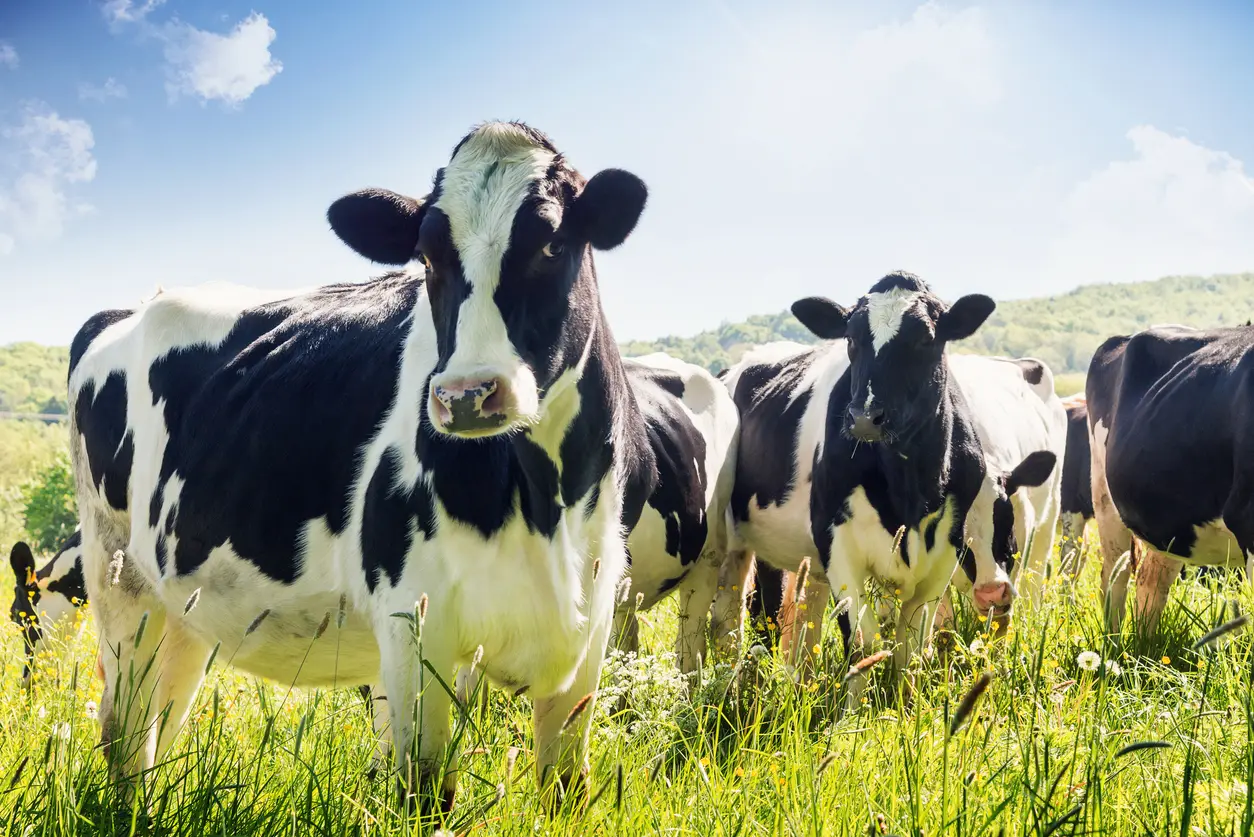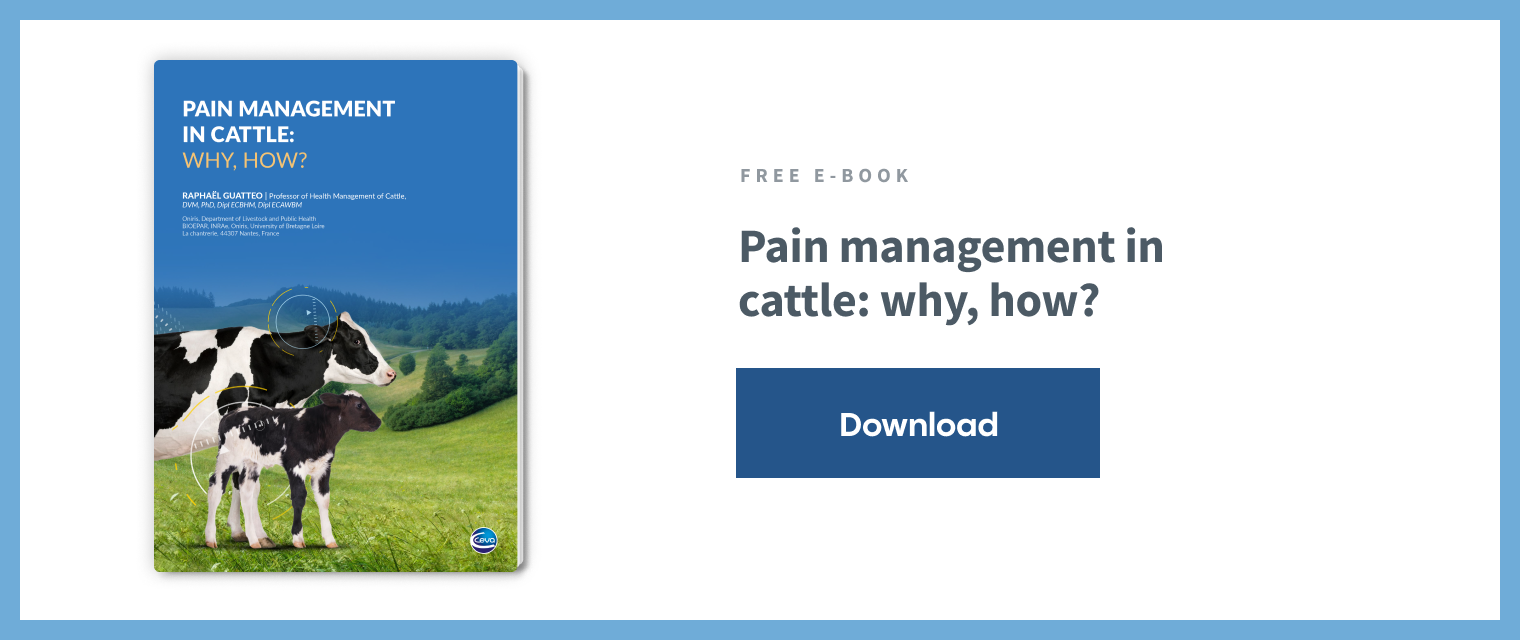Heat stress is one of the main health problems affecting dairy cows around the world, resulting in decreased milk production, increased incidence of disease and even death.
This occurs when a dairy cow is exposed to high temperatures and humidity for prolonged periods. THI (Temperature-Humidity Index) is a crucial tool in monitoring these conditions, helping farmers identify critical thresholds where cows struggle to regulate their body temperature.
In case of heat stress, it is common to observe increased respiratory rate, seeking shade or excessive drooling, among other scenarios.[1]
With heats waves becoming more regular, prevent and manage heat stress is not a summer problem anymore…
Definition of heat stress
Thermal stress occurs when the animal's thermolysis mechanisms are not sufficient for it to be able to regulate its body temperature. Thus, the metabolic heat added to the environmental heat is greater than the amount of heat that the animal dissipates into the environment, with an increase in rectal temperature.
Dairy cattle are homeothermic animals, that is, they have a range of ambient temperatures in which they are in thermal comfort, called the thermoneutrality zone. This zone lies between the lower critical temperature (TCI) and the upper critical temperature (TCS). Below the TCI, the cow is under cold stress and above the TCS, the cow is under heat stress. There is still disagreement between authors regarding the exact values of TCI and TCS, but we can highlight that the TCI is situated at 10-15ºC and the TCS is around 25-30ºC.

Figure 1 : Thermoneutrality zone (Adapted from [2])
In the thermoneutrality zone, the thermoregulation system is practically not activated, whether for heat capture or heat dissipation, and consequently, as energy expenditure for maintenance is minimal, there is a lot of energy for maximum effective production.[3]
The body temperature of cattle, considering normal values, is between 38ºC and 39.3ºC, and may vary according to breed, age and physiological state, being increased in case of heat stress.
It is important to highlight that body temperature is the main indicator of the body's thermoregulation, being directly related to the cow's health, reproductive success and milk production.
The thermal environment is determined by several factors such as ambient temperature, relative humidity, solar radiation and air speed.
It should be noted that high temperatures up to a certain value may not lead to heat stress per se; accumulated increase in relative air humidity also plays an important role [4].
THI (Temperature and Humidity Index): an important tool
To correlate temperature and relative humidity and make it easier for producers and practitioners to identify which cows are experiencing heat stress, the THI was developed.
Developed by Thom (1959) as an index of comfort for humans, Johnson and coworkers (1962) later observed serious declines in the production of dairy cows, associated with an increase in THI
This index can be calculated from the dry bulb temperature and relative air humidity, as described by Johnson (1980) according to the following equation:
THI = Ts + 0.36 Tpo + 41.2
where:
Ts = dry bulb frequency temperature, ºC;
Tpo = dew point temperature, ºC.
The thermal environment is determined by several factors such as ambient temperature, relative humidity, solar radiation and air speed.
Temperature is a measure of how hot it is and humidity is a measure of how much water vapor is in the air. Although outdoor temperatures are mainly decided by solar energy, the temperature inside buildings can be determined by many factors. Sun rays on the roof, heat released by animals and lack of ventilation can cause the temperature inside a stable to be higher than the outside temperature. In warm climates, the air can hold more water, so there is potential for greater humidity than in winter. Although humidity does not change the temperature, it can make it feel hotter than it actually is because sweat cannot evaporate and cool the animal.[5]
When the THI result exceeds 72, it can be said that the animal is in a stressful environment. Not all producers are able to measure THI on their properties, whether due to lack of knowledge, equipment or even time. Therefore, to make things easier, there are tables on the market (Figure 1.) presenting stressful THI for lactating cows.[3]
To use the table, the producer simply needs to know the average temperature and relative humidity in his region.
The severity of heat stress depends on THI levels:

Figure 2 : Temperature and humidity index (Adapted from [6])
Farmers and professionals can use a thermometer/hygrometer to measure the severity of heat stress in animals and in their farms.
It is important to note that when dairy cows are in heat stress, they have to work harder to maintain their body temperature. This can lead to a reduction in feed intake as cows need to expend more energy to cool themselves. Reducing food intake can, in turn, lead to a reduction in milk production.
The Hygrometer is a piece of equipment used to measure the humidity of gases present in the atmosphere as well as the temperature, relating these two aspects simultaneously.
Management and prevention of heat stress
There are some strategies that can be used to prevent and control heat stress in dairy cows.
By taking steps to manage heat stress, dairy farmers can help improve the welfare and productivity of their cattle during hot weather. There are a variety of management practices that can be used to help dairy cattle deal with heat stress. Some of the most important include:
- In warm weather, always take preventive measures against heat stress.
- Use the THI to access the animal’s status related to heat stress
- Provide shade and cooling: Ensure cows have access to shaded areas and consider using fans or misters to keep them cool. If these options are not available, dousing animals can be a practical method of cooling.
- Hydration is key: Provide fresh, clean water consistently to prevent dehydration, a significant contributor to heat stress.
- Dietary adjustments: Modify the cow's diet to include fewer high-calorie components, reducing heat production during digestion.
- Health maintenance: Keep livestock in good health through regular monitoring and care to help them better cope with heat stress.
- Ideal Timing: Avoid transporting dairy cows during the hottest parts of the day to reduce the risk of heat-related problems.
- Do not feed hot silage: Aerobically unstable silage can cause the entire feed to heat up. Cattle simply don't want to eat hot feed in the summer. Additionally, hot silage is a sign that valuable nutrients have been lost. To minimize spoilage, feed at a rate fast enough to avoid heating and discard any moldy silage.[7]

Take home messages
Heat stress can lead to a reduction in food intake, reproductive efficiency, and animal health, with consequent decrease in milk production. Therefore, it is important to control it in dairy cows to ensure the animal welfare and efficient and sustainable milk production.
THI is an important index that can be used easily on farm to rapidly access heat stress in cows.
In summary, THI consists of:
- An index that measures the level of heat stress to which cows are subjected.
- It is calculated based on ambient temperature and relative humidity.
- A high THI will indicate heat stress that has negative consequences in dairy cows
- THI can and should be used to access the heat stress status of your animals.
References
[1] Thurlow Kable and Gould Kevin, “Heat stress in cattle: Recognizing the signs and tips to keep your cattle cool,” Michigan State University Extension , 2018.
[2] Lucas Eduardo De Oliveira Aparecido, João Antonio Lorençone, Pedro Antonio Lorençone, and Guilherme Botega Torsoni, “Bioclimatic Zoning For Dairy Cows in The Brazil By Statistical Modeling,” J Sci Food Agric, Dec. 2021, Accessed: Oct. 09, 2023. [Online]. Available: https://www.researchgate.net/publication/357026959_Bioclimatic_Zoning_For_Dairy_Cows_in_The_Brazil_By_Statistical_Modeling
[3] Polycarpo Rafaela, “Zona de Conforto Térmico e Índice de Temperatura e Umidade (THI),” Milkpoint, Dec. 2012, Accessed: Oct. 06, 2023. [Online]. Available: https://www.milkpoint.com.br/artigos/producao-de-leite/voce-sabe-o-que-sao-zona-de-conforto-termico-e-indice-de-temperatura-e-umidade-81697n.aspx
[4] R. de O. Andarade, “Heat stress in dairy cows: bibliographic review,” 2021. Accessed: Aug. 17, 2023. [Online]. Available: repositorio.unesp.br/handle/11449/213749?locale-atribute=en
[5] “The significance of the temperature and humidity index when managing heat stress in housed dairy cattle,” Galebreaker, Jun. 2023, Accessed: Oct. 06, 2023. [Online]. Available: https://galebreaker.com/temperature-humidity-index-heat-stress-in-housed-dairy-cattle/
[6] H. D. , A. C. R. I. L. B. and M. D. Shanklin. Johnson, “Effects of various temperature-humidity combinations on milk production of Holstein cattle,” Research Bulletin No. 791. College of Agriculture, Agricultural Experimental Station, University of Missouri, Columbia., 1962.
[7] “6 dicas para evitar estresse calórico em vacas,” Educapoint, Nov. 2021, Accessed: Oct. 06, 2023. [Online]. Available: https://www.educapoint.com.br/blog/pecuaria-geral/6-dicas-evitar-estresse-calorico/
About the author
Ana Vanessa Dias Sousa (Researcher FeedInov CoLAB)
With a degree in Veterinary Sciences from the University of Trás-os-Montes and Alto Douro, she worked for five years as a field veterinarian and in a pig and cattle feed factory. She worked in the pharmaceutical industry as a sales manager and technical support for pigs, cattle, rabbits and poultry in mainland Portugal and the Azores. She is currently at Feedinov Colab as a Researcher in the One Health Department.
Explore author’s articles



Leave your comments here